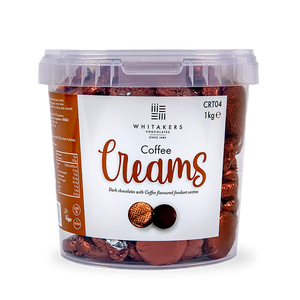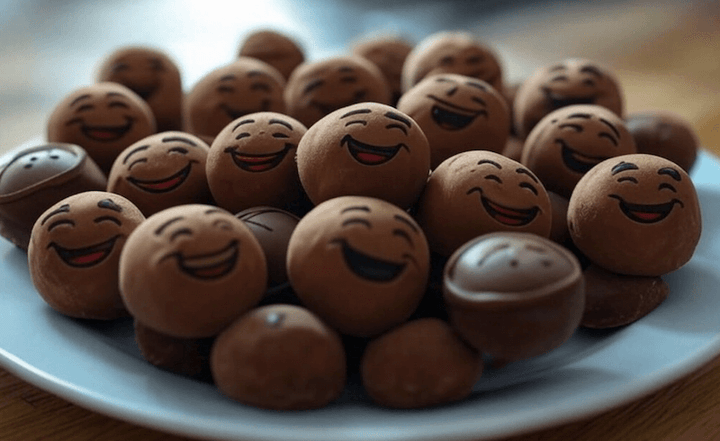In this blog post we are going to look into one of the most crucial steps in the chocolate-making process – chocolate conching.
Despite its strange name, which might conjure images of seashells rather than velvety chocolate, conching is the heart and soul of crafting the rich, melt-in-your-mouth experience we associate with high-quality chocolate.
It's a fascinating procedure that combines time-honoured traditions with technological advancements, shaping the sensory characteristics of our favourite treat.
What is Chocolate Conching?
Chocolate conching is an intricate part of the chocolate production process, named after the shape of the original vessels used, which resembled large sea conches.
It is essentially a method of refining and further developing the flavour and texture of chocolate.
During conching, the chocolate is ground and mixed, often for several hours and at high temperatures.
This process helps to evaporate any remaining moisture and acidity from the chocolate, and to smooth out any remaining gritty particles from the sugar or cacao solids.
This helps to achieve the velvety smooth texture we associate with high-quality chocolate.
Also, the heat and motion of conching encourage the chocolate's complex flavours to develop.
Just as resting a sauce or stew allows its flavours to deepen and meld together, conching allows the chocolate's many flavour compounds to interact and harmonise.
In short, chocolate conching is an art form, a science, and a critical part of the chocolate production process that contributes to the smoothness, taste, and quality of the final product.
Related Post: What is the Chocolate Refining Process?
Why is Conching Important In Chocolate Making?
Conching plays a pivotal role in chocolate making for a number of reasons, each of which significantly contributes to the final taste, texture, and overall quality of the chocolate.
-
Flavour Development: During the conching process, the constant grinding and heat allow unwanted bitter and acidic flavours to evaporate, resulting in a more balanced, nuanced chocolate flavour. Also, the process enables the sugar and cocoa to blend perfectly, enhancing the sweetness and richness of the chocolate.
-
Texture Refinement: The process of conching ensures the reduction of particle size to a level undetectable by the human tongue, typically less than 30 micrometers. This gives the chocolate its characteristically smooth, velvety texture, ensuring it melts perfectly on the tongue.
-
Aroma Enhancement: Conching also plays a vital role in the development of chocolate's aroma. The heat and aeration during the process help to bring out the unique bouquet of scents inherent in the cocoa beans.
-
Consistency: Conching allows the various ingredients in chocolate — sugar, cocoa particles, and cocoa butter — to homogeneously blend together. This uniformity is crucial for consistent flavour and texture in every bite.
In essence, without the conching process, the chocolate we know and love would be gritty, uneven, and lacking in the complex flavours and aromas we've come to associate with this divine treat.
It's the conching that truly elevates chocolate from a simple sweet to a luxurious indulgence.
What is a Conching Machine?
A conching machine, often simply referred to as a 'conche', is a crucial piece of equipment used in the chocolate-making process.
Its primary function is to refine the chocolate mixture to the desired level of smoothness and develop the rich, complex flavours that define high-quality chocolate.
The design of a conching machine can vary, but typically, it consists of a large, open container and a set of heavy rollers or blades.
The container holds the chocolate mixture, and as the rollers or blades move, they grind, knead, and aerate the mixture.
This continuous agitation is what helps to break down the sugar and cocoa particles and blend them thoroughly with the cocoa butter.
During the conching process, the machine also generates heat, typically between 49-82 degrees Celsius.
This heat contributes to the evaporation of unwanted volatile compounds, reducing bitterness and acidity, and promotes the development of desired flavours and aromas.
From small-scale artisanal chocolate producers using tabletop conching machines to large factories equipped with conches that can handle several tons of chocolate at a time, the conching machine is a cornerstone of the chocolate-making process.
Its role in transforming a coarse, gritty mixture into the luscious, silky smooth chocolate we adore cannot be overstated.
What is the Process of Conching Chocolate?
The process of conching chocolate involves several stages, and each is crucial for developing the smooth texture and rich, complex flavours that characterise high-quality chocolate.
Here's how the process typically unfolds:
-
Dry Conching: The first stage of the process is known as 'dry conching'. The conching machine is loaded with the coarsely ground cocoa, sugar, and often some cocoa butter. The mixture is then heated and agitated by the machine's rollers or blades. The friction and the heat from this process help to reduce the size of the sugar and cocoa particles and initiate the release of the inherent aromas of the cocoa.
-
Paste Conching: Once the mixture has been heated to a certain temperature, additional cocoa butter is introduced, transforming the dry mixture into a thick paste. The continued grinding and kneading of this paste further reduce the particle size, enhancing the chocolate's eventual smoothness.
-
Liquid Conching: As the conching process continues, the paste gradually liquefies. This stage is vital for flavour development, as the heat and aeration allow unwanted volatile compounds to evaporate, reducing acidity and bitterness.
-
Polishing: The final stage of the conching process is sometimes referred to as 'polishing'. The conche continues to work the chocolate mixture, which by now is smooth and liquid, for several more hours. This final period of agitation helps to ensure a perfectly smooth, homogeneous mixture.
The total conching time can vary significantly, depending on the desired flavour and texture characteristics of the final product.
Some chocolates may be conched for as little as a few hours, while others might undergo the conching process for several days.
The longer the conching period, the smoother and more refined the flavour of the finished chocolate.
In essence, conching is an art form in itself, one that demands a deep understanding of the raw ingredients and a skilled hand to guide the process to perfection.
How Does Chocolate Change During the Conching Process?
The conching process exerts a transformative effect on chocolate, refining its texture, enhancing its flavour, and preparing it for the final stages of production.
Here's how the magic unfolds:
-
Texture: Perhaps the most crucial impact of conching is on the texture of the chocolate. At the outset, the ground cocoa and sugar mixture is coarse and grainy. The prolonged grinding and kneading action of the conching machine reduces the size of these particles to a level imperceptible to the human tongue (ideally below 20 microns), resulting in a smooth, melt-in-the-mouth texture that's a hallmark of quality chocolate.
-
Flavour: Conching also plays a pivotal role in shaping the chocolate's flavour profile. The heating and aeration of the chocolate during the conching process encourage unwanted volatile compounds and acids to evaporate, reducing bitterness and astringency. Simultaneously, the process facilitates the further development and blending of the inherent cocoa aromas and the more nuanced, complex flavours that define the character of the finished product.
-
Homogeneity: Conching ensures an even distribution of cocoa, sugar, and cocoa butter throughout the chocolate. This homogeneity is crucial not only for the consistency of flavour and texture in the finished product but also for the subsequent stages of tempering and moulding, which require a uniform mixture for optimal results.
-
Viscosity: The conching process can also impact the viscosity, or flow properties, of the chocolate. By controlling the degree of friction and the amount of added cocoa butter or other fats during conching, chocolate makers can adjust the thickness of the chocolate, which can influence how it behaves in subsequent manufacturing processes.
The conching process takes the raw, somewhat harsh components of chocolate and refines them into a smooth, complexly flavoured, homogenous mass that's ready to be transformed into the chocolate products we know and love.
Where Can You Buy Delicious Chocolate?
If you're in the market for high-quality chocolate, look no further than us here at Whitakers Chocolates.
With over 135 years of experience in the art of chocolate making, we've spent generations perfecting our recipes and techniques, earning us a reputation for crafting exceptional chocolates.
At Whitakers, we're firm believers in quality, which is why we insist on using only the finest and most natural ingredients in our chocolates.
You won't find anything nasty or artificial here – our chocolates are 100% natural, free from any unwanted additives.
We believe that the best chocolates come from the best ingredients, which is why we take such care in selecting ours.
Over the years, we've grown our range significantly, always with an eye towards ensuring there's something for everyone.
We understand that dietary needs and preferences vary, which is why we've worked hard to develop a range that includes options for those living a vegetarian, vegan, or gluten-free lifestyle.
At Whitakers, we're firm believers that everyone should have access to great chocolates, regardless of their dietary requirements.
Whether you're after our classic dark, milk, or white chocolates, our famous chocolate wafer thins, or any of the other tempting treats in our range, you can be confident that you're getting a product that's been crafted with care and attention to detail.
We invite you to discover the difference that over a century of experience makes – try Whitakers Chocolates today.
Here’s a few treats that might tempt you!
- Dark chocolate bar infused with real sea salt and lime juice
- Dark chocolate peppermint fondant creams
- Couverture chocolate - Easymelt 55% dark chocolate mini shards - made for melting!
-
Milk chocolate wafer thins, with crunchy sugar crystals flavoured with natural sea salt and caramel
- The ultimate in luxury, our range of hand finished chocolate truffles
Some Notes From an Expert Chocolatier
As an expert chocolatier at Whitakers, we’ve spent years mastering the art of chocolate production, with conching playing a key role in the journey.
Here are some insider insights from our experience:
-
Duration Matters: The duration of the conching process can significantly influence the flavour profile of your chocolate. A longer conching time can lead to a smoother, more rounded flavour as more volatile acids and other compounds are given time to evaporate. At Whitakers, we carefully balance conching time to achieve our distinct, smooth taste.
-
Understand Your Cocoa: The origin and variety of the cocoa beans can determine how much conching is needed. Certain beans naturally possess more pronounced acidity or bitterness, and these may require a longer conching process to tame these characteristics.
-
Sensory Skill: Conching is not just a mechanical process; it requires a keen sensory understanding to know when the chocolate has reached the desired flavour and texture. It's a mix of science and art, with the chocolatier needing to engage their senses of taste, smell and touch.
-
Every Batch is Unique: Just like in wine-making, the conditions under which the cocoa beans are grown can vary from year to year, affecting their flavour. As a result, we sometimes need to adjust our conching process to achieve a consistent end product. It's part of the challenge – and joy – of being a chocolatier!
Remember, conching is a fundamental step in creating the high-quality, indulgent chocolate that we love to share with our customers.
It's a process that requires skill, patience, and a deep understanding of the wonderful world of cocoa.
Final Notes On Conching Chocolate
The process of conching is an essential step in creating high-quality chocolate with a well-rounded flavour and a pleasing texture.
This delicate process, requiring both a keen sense of taste and technical expertise, can dramatically influence the quality of the final product.
So, the next time you savour a piece of chocolate, take a moment to appreciate the meticulous conching process that has gone into crafting its unique taste and texture.
The world of chocolate is a journey of discovery, and conching is a crucial part of that journey.






















